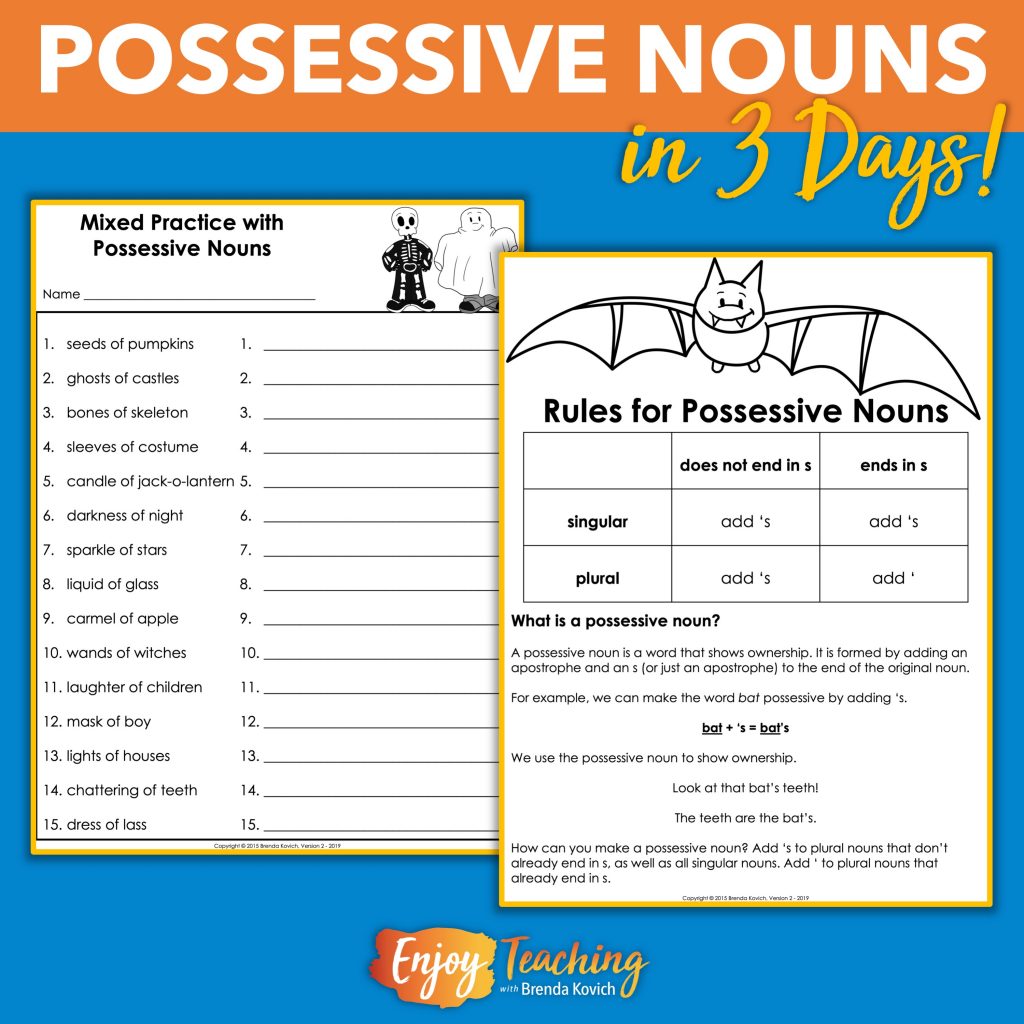Teaching possessive nouns can be a train wreck. But have no fear! Your third, fourth, and fifth grade students can learn this tricky skill in just three days.

Ms. Sneed Learns About Teaching Possessive Nouns
Our favorite fourth grade teacher, Ms. Sneed, sat at the side table with her mentor.
“So, how are things going in your ELA block?” Mrs. Brown asked.
Ms. Sneed sighed deeply. “Ugh! I taught possessive nouns last month. Unfortunately, my students did not do well on the test. And now they’re putting apostrophes everywhere!”
Mrs. Brown smiled. “Teaching possessive nouns can be easy. Just take a few simple steps:
- Tell kids that possessive nouns show ownership. When a word ends with an apostrophe and an s, that person, place, or thing owns something.
- Explain that the singular or plural noun must first be written in its entirety. Then you add the possessive ending.
- Teach singular possessive nouns.
- Teach plural possessive nouns.
- Do a little mixed practice.”
The mentor clicked around on her laptop. Then she turned the screen so Ms. Sneed could look on.
“I use this set of Halloween-themed possessive nouns activities every year in October,” Mrs. Brown said. “However, you can also get a generic resource to use anytime during the year.”
Teaching Singular Possessive Nouns (Day #1)
Mrs. Brown scrolled to the first set of worksheets.
“Teaching singular possessive nouns is straightforward: just add ‘s. To everything! Have kids practice writing the word and adding the ending.
“It’s important to emphasize that the entire noun must be written first. After that, the ‘s is added. This helps kids battle their greatest mistake: adding an apostrophe before an s that already appears in the word.”
“Start with one-word practice. Give your students a list of singular nouns and ask them to make them possessive. Sprinkle in plenty of singular nouns that end in s (like bus and glass). Remember: write the word then add ‘s.”

Teaching Plural Possessive Nouns (Day #2)
Mrs. Brown scrolled to the second set of worksheets.
“Continue with phrases. You’re likely to run into some problems here. Some students will have trouble figuring out which word to make possessive. Others may have difficulty with order of the words. Still others will make both words possessive. Use modeling to help kids see how it’s done. Then walk around the classroom to spot (and correct) those who still don’t quite get it.”
“On the second day, you teach plural possessive nouns. When plural nouns do not end in s, you handle them just like singular nouns – – – add ‘s. But if the plural noun already ends in s, you simply add an apostrophe.
“Again, the entire noun must be written first. For plural nouns ending in s, you add apostrophe to the end. If the noun does not end in s, you need to add an apostrophe and then an s. Just like Day #1, start with one word and continue to phrases.”

Doing a Little Mixed Practice (Day #3)
Next, Mrs. Brown scrolled to a third set of worksheets.
“On the third day, you can seal the deal with mixed practice. In my experience, however, kids will need repeated reinforcement and/or practice throughout the year. Now that they have the rules, it’s time to mix it up.”

“I think my kids would do better, if I had the rules printed out,” said Ms. Sneed.
Her mentor scrolled back to the beginning of the file and found a possessive nouns reference guide. “Yes, if kids know the rules, everything is smooth sailing.”

It’s Easy!
“You’re right!” Ms. Sneed said. “If you take the right approach, teaching possessive nouns can be easy – and maybe even fun.”
With a few clicks, Mrs. Brown landed found the generic possessive nouns resource. “You can see that it also includes some cute coloring sheets and an assessment.”
The younger teacher nodded. “Yep. I’m doing this,” she said. And, of course, that famous teacher smile lit up her face.




